The Wavy Gravy Movie: Saint Misbehavin' debuts tonight on Showtime at 7:55 p.m. Eastern.
Some people really don't like hippies, and some people really don't like clowns. Then there are the people who can't stand either, and this reverential documentary could probably kill them on contact. The two best-known things about Wavy Gravy are probably that Ben & Jerry's once named an ice cream flavor in his honor, and that he served as master of ceremonies at Woodstock. In the concert documentary that came out of the festival, Wavy can be seen informing the crowd that breakfast is coming, courtesy of his West Coast commune, the Hog Farm. He's a jarring presence in that youthful scene: He was 33 at the time and looked much older, partly because he had been smiling for so long that he didn't seem to have eyes anymore, just a couple of slits located toward the top of a face that was all happy crinkles. Wavy has lived another 40 well-documented years since then, and to judge from the photos and news footage and home movies that are used here to fill in the gaps of his life, the only time he's ever stopped smiling was when he journeyed to Nepal and the surrounding area in the 1970s; images from his trip show him slack-jawed and awestruck, presumably from being surrounded on all sides by Eastern tranquility and mellow vibes.
For the uninitiated, part of the surprise of the documentary is learning about how far back Wavy's career goes and just how many touchstones of late '50s and '60s hip he's connected to. It turns out he did once have facial features: In photos from the period before the hippies arrived to wrestle the bohemian-zeitgeist torch from the beats, Wavy looks a little like Chris Pratt and sometimes a little like Peter Ustinov, depending on whether he'd just eaten a sandwich. (Nowadays, in his mid-70s, Wavy looks a little like a half-melted ice-cream sculpture of Bert Lahr playing a tie-dyed Benjamin Franklin.) Wavy used to perform spoken-word poetry at the Gaslight Cafe, and he takes credit for convincing the club's owner, John Mitchell, to open the stage up to folk musicians, a move that turned it into the quintessential village coffeehouse of the pre-electric-Dylan era, (According to Wavy, Mitchell's response, before he wore him down, was, "Well, I don't know, I made my money with poetry," Hearing this was enough to immediately make me long to see a documentary about John Mitchell, and learn more about this miracle man who actually made money off spoken-word poetry.) Wavy's recollection of this time in his life cleared up a few minor mysteries for me. You know all those scenes in bad '50s movies where beatnik audiences signal their approval by snapping their fingers? Turns out this was done in imitation of the Gaslight audiences, who had to do it because there were people living above the club who'd get pissed off and call the cops if they had to listen to loud applause all night.
In a statement of principle that wouldn't make a bad exit speech for someone just voted off Work of Art, one of Wavy's old pals, Buffy Sainte-Marie, tells the camera, "The cat was out of the bag that the arts weren't something you got with a degree from a university; the arts were something that's in anybody, and it just jumps out of you." (I'm guessing that Buffy hasn't seen Exit Through the Gift Shop.) In that spirit, Wavy, who was still going by the name Hugh Romney, used to sit around with Dylan and his other buddies, "get delightfully altered, and create." At some point, "after doing my poetry for years and years and years, I'd start talking about my weird day," and he started getting advice that he should "skip the poetry and just talk about my weird day." Thus did he transition from poet to what a newspaper ad describes as "unusual comedian." (We hear a snippet of one routine he recorded; the material sounds like unfocused Lord Buckley, while you can hear the voice straining to sound like Lenny Bruce.) Names dropped also include those of Tony Tim and Moondog (who joined up with Wavy for something they called the Phantom Cabaret, presented through the auspices of the Living Theater) and Bill Cosby, who tried to hook Wavy up with his manager for a doomed attempt to launch a mainstream career.
But Wavy didn't begin to find his true place as a countercultural funhouse-mirror version of an elder statesman until he hooked up with another 30-ish cheerleader for youthful rebellion, Ken Kesey, and hitched a ride on the good bus Furthur with the Merry Pranksters. Wavy summarizes the "deep truth" he learned from that experience this way: "I realized that when you get to the very bottom of the human soul, where the nit is slamming into the grit, and you're sinking, but you reach down to help someone that's sinking worse than you are, and everybody gets high. And you don't even need LSD to do that!" His soul restored, Wavy and his groovy wife Johanna took command of the Hog Farm, where pigs were raised and happy antics engaged in. "We hadn't made a plan to have a commune," says Johanna. "It's just that… there was room."
After awhile, according to Johanna, "We started having events, to have something happening, because otherwise, people were just coming to look at us all the time. We didn't mind the company, but we didn't want to be stared at." Soon, the members of the collective began taking to the road to spread the gospel of universal togetherness and stuff, which led to their participation in big open-air rock festivals, such as Woodstock and the Texas International Pop Festival, where B. B. King inspired Hugh Romney to adopt the name "Wavy Gravy." While still on the road, Johanna gave birth to their son, and since B. B. King wasn't around to suggest a name for the kid, his parents put their heads together and christened him Howdy Do-Good Tomahawk Truck Stop Gravy. Interviewed today, the young Mr. Gravy, who seems remarkably well-balanced, all things considered, says, "The legal age you have to be to change your name is 13. I spent my 13th birthday in court." He answers to "Jordan" now.
Wavy's chosen persona as an activist and spokesman for the revolution was that of the "wise fool," like the jester in King Lear. It was intended to be a disarming pose, but it got the stuffing kicked out of him by fed-up cops about as often as the poses of street rebels who came on as if they were armed to the teeth. At some point, he went full-on clown, complete with face paint and red rubber noses, and he noticed that he didn't get beaten up nearly as often: "Clowns are safe," he says. (He has also found that cops are very reluctant to risk being shown on the nightly news whaling on people dressed as Santa Claus or the Easter bunny.) Decades of taking it to the streets have taught him a few things, and some of his advice is borderline priceless: "Get arrested with as many of your friends as possible. If it's just three or four of you, you're gonna go to regular jail, but if it's three- or four-hundred of you, they have to put you in pretend jail."
The most disappointing thing that you learn from watching so many choice clips of Wavy through the years is that, like most Shakespearean clowns and so many people who self-consciously advocate the use of humor in the face of poverty, social injustice, and life's other sorrows, he isn't funny. (He's just fun-loving, which is not the same thing at all.) Even the kids interviewed at his crazy-clown-time performance camp Winnarainbow, when asked to sum the place up in one word, are more likely to offer good progressive answers such as "inclusive" than, say, "fun." His best joke, the long-running "Nobody for President" campaign, which gives him an excuse to hold up a sign reading "Nobody Loves the Poor," was lifted from a Betty Boop cartoon, and also has the disadvantage, as activist political comedy goes, of amounting to a call to disengage from the actual political process, write the whole thing off as a sham, and hope that whoever winds up with the most votes after everybody else has gone to the polls is less repugnant to you than the other candidate would have been. Wavy is never actually shown saying the words, "Turn on, tune in, and drop out," but that seems to be the basis for much of his shtick, and it's not much help to those of us who aren't looking to join a self-sustaining commune anytime soon,
Still, those who aren't unregenerate hippie-clown-haters will find Hugh a hard man to dislike, and the first hour or so of his documentary has a lot of stuff in it that amateur pop culture archivists and students of alternate tribal cultures will find fascinating. The last third, which focuses on all the good that Wavy does by holding benefit concerts to raise money for the Seva Foundation, an international health organization (specializing in combating blindness) that he co-founded with Dr. Larry Brilliant after their trip to Southeast Asia, is really just for people who will not only take the use of the word "saint" in the title seriously but subscribe to the gospel of Wavy Gravy as if it were holy writ. When Jackson Browne and Bonnie Raitt show up to compliment Wavy, and themselves, on being part of that special, select group of people who want to make a better world and who "love each other so much," it's a wonder the screen doesn't mist over from all the moisture generated by so much mutual ass-kissing. But what the hell. Saint Misbehavin' isn't as surefooted a piece of moviemaking as Martin Scorsese's recent George Harrison documentary, but it does have one thing in common with it: Its hero comes across as such a nice guy, who's worked selflessly enough to do a lot of real good, that it makes you feel a little churlish for those moments when you find him a teensy bit insufferable.

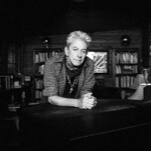



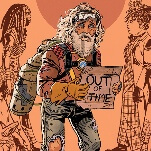
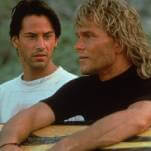
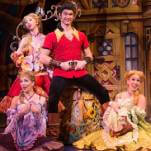
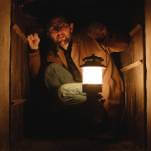



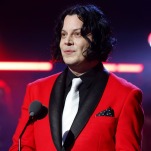

![Rob Reiner's son booked for murder amid homicide investigation [Updated]](https://img.pastemagazine.com/wp-content/avuploads/2025/12/15131025/MixCollage-15-Dec-2025-01-10-PM-9121.jpg)


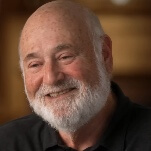
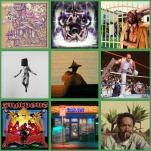


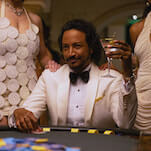

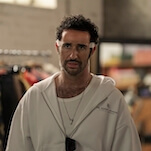


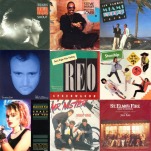

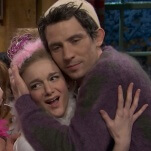
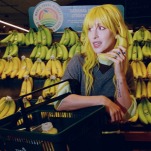
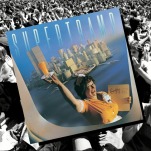





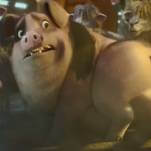


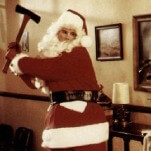
![HBO teases new Euphoria, Larry David, and much more in 2026 sizzle reel [Updated]](https://img.pastemagazine.com/wp-content/avuploads/2025/12/12100344/MixCollage-12-Dec-2025-09-56-AM-9137.jpg)